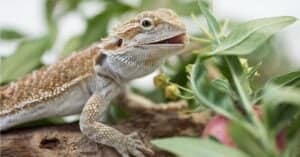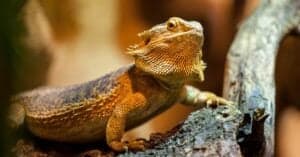Baby bearded dragons are tiny, adorable reptiles that make amazing pets. Did you know that beardies have three eyes? There’s so much to learn about these astounding reptiles.
Let’s learn what a baby bearded dragon is called and four more amazing facts you probably didn’t know!
#1: Did You Know Baby Bearded Dragons are Called a Hatchlings?
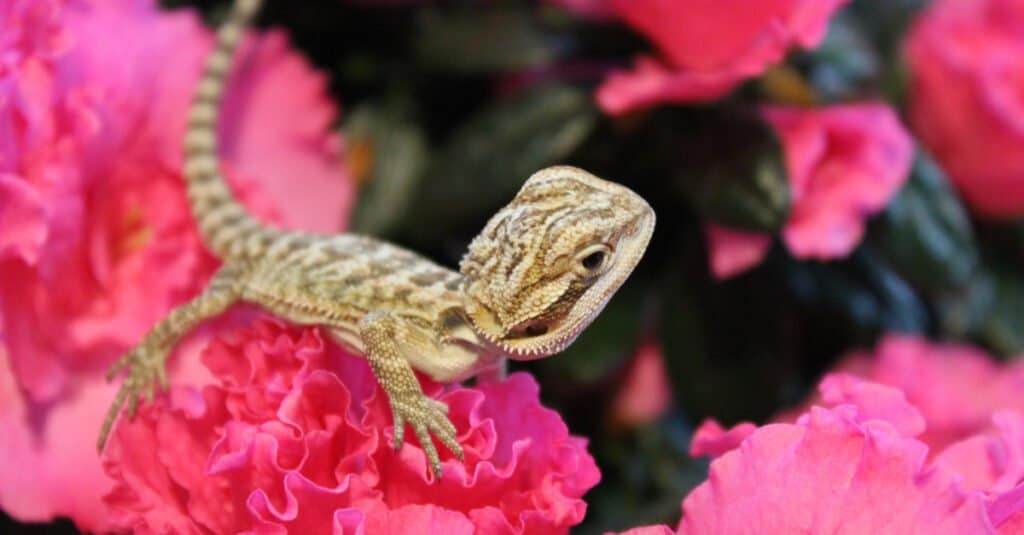
Bearded dragons are called ‘hatchlings’ when babies
©thomascanss/Shutterstock.com
A baby bearded dragons is called hatchling! A baby bearded dragon is one of the friendliest reptiles that people keep as pets today. Since these tiny creatures hatch from eggs, they are called hatchlings!
Did you know that baby bearded dragons aren’t the only animals on Earth that are called this? It’s true! They share this title with baby turtles, crocodiles, alligators, and even geckos!
#2: Bearded Dragon Hatchlings Have Three Eyes
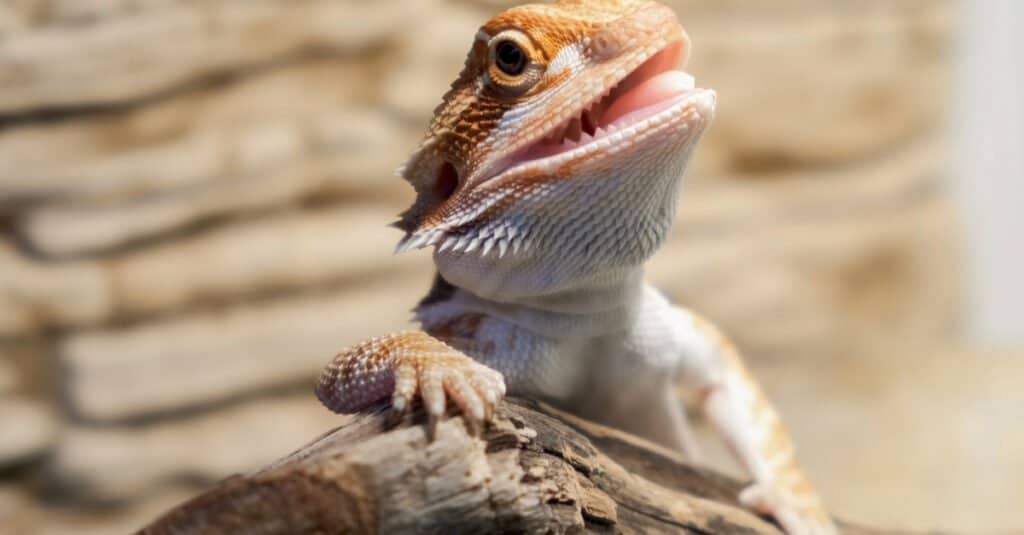
Bearded dragon hatchlings have an invisible third eye.
©Vadim Zakharishchev/Shutterstock.com
You’ve probably heard a story or two about cyclops monsters that have a third eye in the middle of their foreheads. Even though baby bearded dragons aren’t as ominous, they share the third eye trait with these fictional monsters.
A hatchling’s first two eyes are visible on each side of their heads. They use these eyes to see things with their vision, just like humans. Their third eye, though, can’t be seen by the naked eye. This eye, called the parietal eye, is on the top of its head. Beardies use this eye to detect changes in light and shadows.
You might be wondering why a bearded dragon hatchling needs an eye that can’t “see”. In the wild, one of the main predators of bearded dragons is birds of prey, such as hawks. When these predators swoop above baby beardies, they can sense the shadow of the bird with their third eye. This alerts the tiny reptiles to danger so that they can quickly retreat to safety.
#3: Incubation Temperature May Impact Hatchlings’ Intelligence
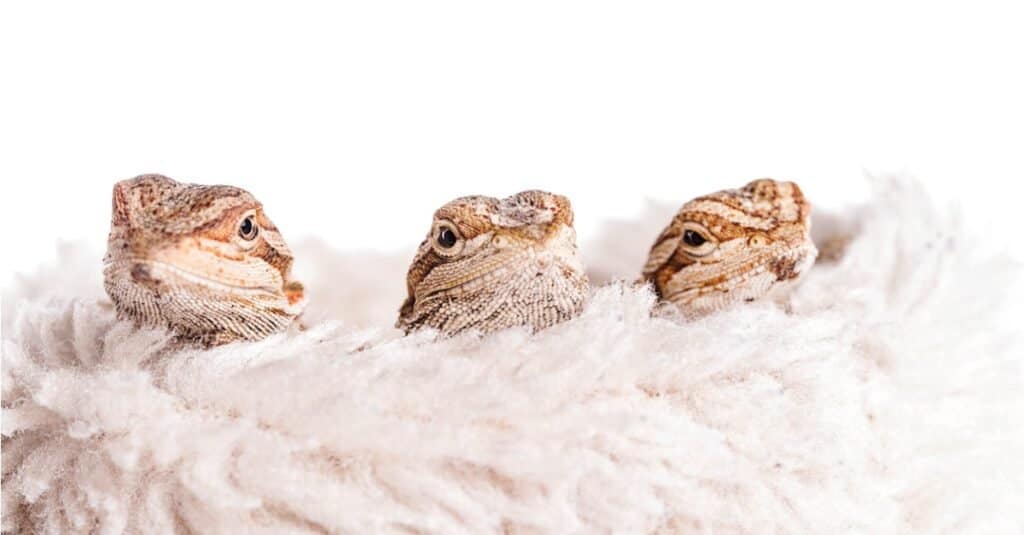
Lower incubation temperatures might contribute to higher intelligence in hatchlings.
©iStock.com/Kaan Sezer
A group of researchers in the United Kingdom conducted a study to find out how global warming impacted bearded dragons.
To put their experiment to the test, they started by incubating bearded dragon eggs in two separate incubators, with one being warmer than the other. The room temperature was closely controlled and identical for both.
Once the hatchlings were born, they were housed in similar enclosures, fed the same diet, and exposed to the same routines. Once both groups reached sexual maturity, they were shown a short video of an adult beardie opening a sliding door. Then, they were placed in the enclosure with the sliding door for five minutes each to be observed.
The findings of this experiment indicated that the bearded dragons who incubated at lower temperatures opened the door more quickly than their peers. This conclusion suggests that cooler temperatures are conducive to more intelligent baby bearded dragons. Who knew!
#4: Baby Bearded Dragons Really Have a Beard!
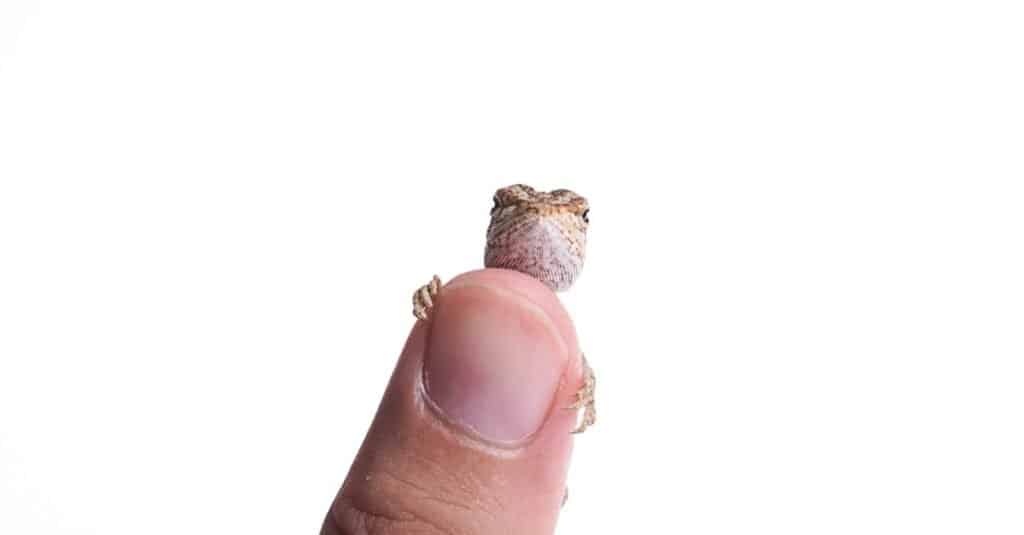
The skin on the underside of a hatchling’s chin is called a gular pouch.
©iStock.com/Kaan Sezer
If you’re wondering why these reptiles are called bearded dragons, the answer is simple. The underside of their chin is covered in textured, beard-like skin. This part of their body, called the gular pouch, can be manipulated by the tiny reptiles to ward off predators.
When a bearded dragon hatchling is upset, you’ll be able to tell. This is because he will open his mouth and puff out his gular pouch. Doing this makes the beardie look more intimidating and gives off the impression that he is larger than he is. During this defense mechanism, his chin might even turn completely black!
Bearded dragons have unique personalities that make them amazing pets. Aside from their beard, they have many other interesting personality qualities that make them highly desirable. Additionally, since bearded dragons don’t mimic one another, you can trust that a beardie’s personality is their own.
#5: Hatchlings Can Change Colors!
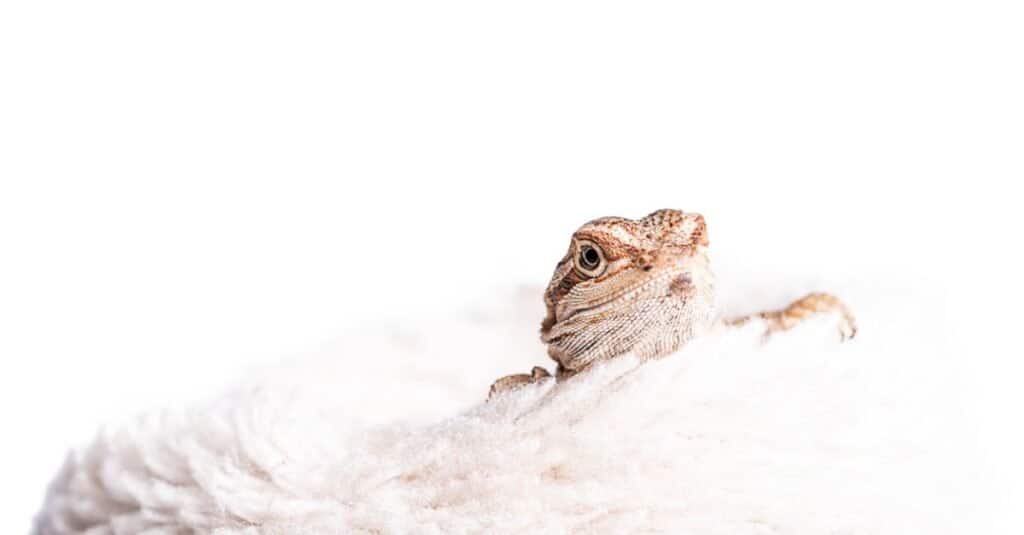
Beardies can alter their color to help regulate their body temperature.
©iStock.com/Kaan Sezer
We know what you’re thinking – are bearded dragon babies like chameleons? The answer is not exactly. Bearded dragons can indeed change their body color, but the difference is more subtle than their chameleon cousins.
While chameleons change color to hide from predators and attract a mate, hatchlings change to regulate their body temperature. For example, if a hatchling gets too hot, it will lighten his skin color. This effectively deflects sunlight, which allows the hatchling to cool off.
On the other hand, if a beardie gets too cold, they’ll need to warm up quickly. Hatchlings are cold-blooded reptiles, which means they depend on their environment to regulate their body temperature. This means that sunlight and external warmth are the only way bearded dragons can warm up.
When kept as pets, baby bearded dragons need a heat lamp, UV lamp, and humidity to survive. The heat lamp helps regulate their temperature. The UV lamp mimics the sun’s rays and helps ward off metabolic bone disease, as well as fostering healthy bone development.
Humidity fosters healthy skin and helps bearded dragons shed as they grow. Since a big part of growing into an adult is shedding old skin, humidity is certainly one of the most important parts of a bearded dragon’s habitat.
The photo featured at the top of this post is © iStock.com/Kaan Sezer
FAQs (Frequently Asked Questions)
What are baby bearded dragons called?
Baby bearded dragons are called hatchlings. They share their title as babies with many other reptiles in the animal kingdom, such as alligators, crocodiles, and geckos.
How much do baby bearded dragons weigh?
Baby bearded dragons are seriously tiny. As newborns, they weigh an astoundingly small 2 grams, which is equivalent to the weight of about five paperclips.
What do baby bearded dragons eat?
As babies, bearded dragons eat mostly insects. When kept as pets, the most popular food for bearded dragons is baby crickets. Hatchlings are known for being ravenous and can consume over 100 baby crickets in a single day! Once babies reach adulthood, though, their diet shifts to mostly greens, with only about 20% of their diet consisting of insects.
Where do baby bearded dragons live?
Bearded dragons prefer climates that are warm with humidity. They can be found in savannas, scrublands, deserts, and subtropical woodlands. They are partially arboreal, which means they love to hang out in bushes and low-hanging trees.
Thank you for reading! Have some feedback for us? Contact the AZ Animals editorial team.




